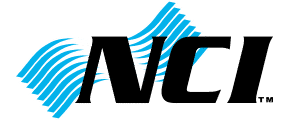The first freeze of the fall and winter is a sneaky nuisance for most homeowners looking to keep their plumbing and sprinkler systems working properly until spring arrives. The team at Worley’s Home Services talks to many Virginians each year about fixing broken backflow preventers, shut-off valves, and pipes after the cold weather has caused irreversible damage. If you are looking for the best process for irrigation winterization, here’s what you need to know about preparing a backflow preventer for the winter.
What Is A Backflow Preventer?
As the name suggests, a backflow preventer is a device that prevents contaminated water from flowing backward, where it can harm your plumbing or worse, your family. Backflow preventers usually consist of a series of ball joints and valves that allow water to flow in one direction only. When you stop needing your sprinkler system in the late fall and winter, the latent water inside a backflow preventer can freeze and expand, breaking pipes and valves in the process. Then, when you go to turn the irrigation system back on in the spring, you’ll be left scrambling to fix it!
How To Winterize a Backflow Preventer
Preventing the issues above starts before the first freeze. Here’s how to thoroughly and properly winterize a backflow preventer:
- Shut off the water supply to your irrigation system
Locate the main water supply for your irrigation system and turn the valve fully off.
- Drain backflow preventer
There should be two “check valves” on your backflow preventer that can be drained using a flathead screwdriver. Turn these to their open position, let them drain fully, and leave them open.
- Turn ball valves to half open
Since your main water supply is turned off, it is not necessary to fully close the ball joint valves on each side of your backflow preventer (doing so can actually increase the risk that small amounts of moisture will freeze inside the ball joints, causing the seal to break). Turn both of these valves so that they are halfway open, usually just a quarter turn.
Have You Had Frozen Backflow Preventer Issues Before? Try This.
While the above steps should resolve any issues with freezing, some irrigation systems may require going the extra mile to remove as much water as possible from your system. Depending on your comfort level with DIY plumbing, you can remove the top of your backflow assembly and unscrew the bonnet (which should only be hand-tightened). Then, remove the washer and poppet assembly (these are the parts left floating inside the backflow preventer) and dry them thoroughly. If you are getting this done on a day when temps are still well above freezing, you can leave your disassembled backflow preventer for a few hours to let any leftover moisture evaporate, ensuring there is no water left to wreak havoc on your system when it comes time to turn it back on again!
Need Help Winterizing Your Irrigation and Plumbing? Call Worley’s!
Preparing your home for a safe and comfortable winter here in Norfolk and the entire 757 area can be a pain in the neck, and forgetting some of the more important tasks can lead to bigger headaches when the temperatures start to rise in the spring. With Worley’s Home Services, you can leave your winterization, weatherization and insulation, heating and cooling, and electrical services to us so that you can enjoy peace of mind through the holiday season and beyond.








